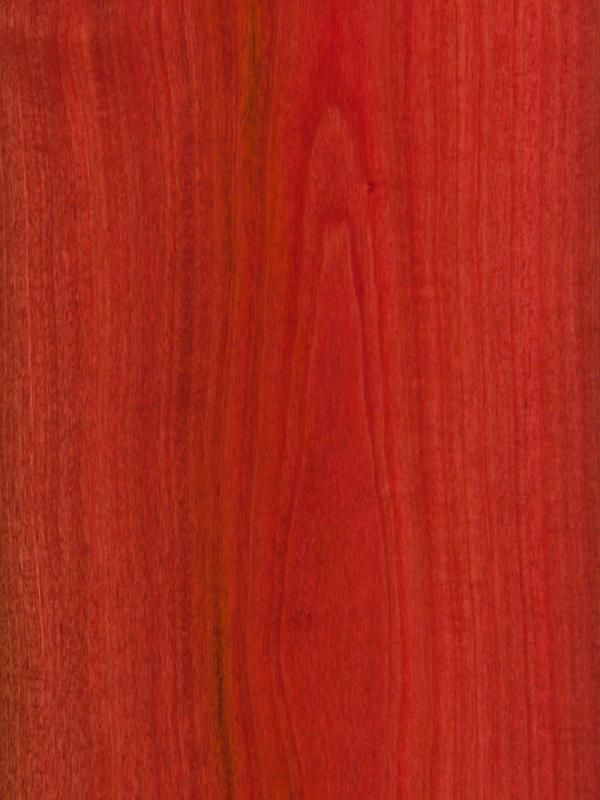
Family: Rhamnaceae Family. Latin name is Berchemia Zeyheri.
Origin: Predominantly Zimbabwe, Mozambique, and South Africa. Despite being native to Southern Africa, the wood is rare throughout its home continent.
Common Names: Red Ivory, Purple Ivory, Umnini, or Umgoloty.
The Tree: A Pink Ivory tree tends to have the characteristics of a scrub tree with tree heights ranging from 20 to 35 feet tall with a diameter of 6” to 12”. Young branches of the Pink The Tree (characteristics): A Pink Ivory tree tends to have characteristics similar to that of a scrub tree with heights ranging from 20 to 35 feet tall and 6” to 12” in diameter. Young branches of the Pink Ivory tree are green, with occasional occurrence of galls on these branches. The bark of the Pink Ivory tree is smooth and gray. As the tree ages, the bark becomes darker in color with cracked segments that appear rectangle in shape. The tree carries leaves that thin, simple, and turn a clear golden yellow color before falling.
Appearance of Wood: The heartwood is a stunning watermelon pink color. Although the heartwood color can range from a brownish red to a bright neon pink color. Neon pink is the preferred color and the most difficult color to obtain. Sapwood varies in color from pale yellow to light brown.
Density: Pink Ivory is an extremely hard wood. It is also very strong and stiff with a Janka Hardness of 3,230 pounds of force. Average reported specific gravity ranges from .90 to 1.04.
Dry and Shrinkage: Drying Pink Ivory lumber is no easy task. It takes years of monitoring and adjusting in the right conditions to dry a Pink Ivory properly. Truly dry Pink Ivory is a rare find. Average reported shrinkage values are 4.8% Radial, 7.2% Tangential, 12.1% Volumetric.
Working Properties: Pink Ivory is a very dense wood that is strong and stiff making it difficult to work with hand tools. Its hardness makes it ideal for woodturning and carving. Pink Ivory has a blunting effect on cutting tools and tear-outs are common when planning the wood. Pink Ivory can be finished to a high polish.
Durability: Color pigments produced in Pink Ivory wood are chemicals produced in the tree to fight off pests, as a result, Pink Ivory is considered very durable. Although this wood is considered very durable it is rarely used in exterior applications.
Uses: Pink Ivory is a much-desired wood for all sorts of turned objects due to its color and rarity. The wood can be found in pool cues, wine stoppers, small boxes, jewelry, knife handles, and chessman. Pink Ivory can also be used to make musical instruments and veneers. Pink Ivory wood is known to carry excellent tonal qualities as well.
Availability: Pink Ivory is considered one of the rarest woods in the world. The bright pink pieces of Pink Ivory are the most difficult to source. There are strict regulations for cutting Pink Ivory in South Africa making this a major factor leading to high prices. This wood is not listed in the CITES Appendices or on the IUCN Red List of Threatened Species.